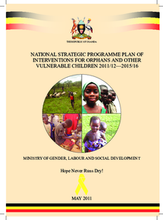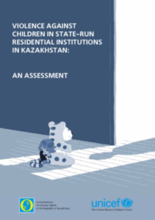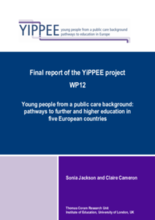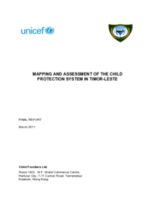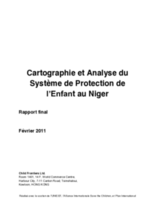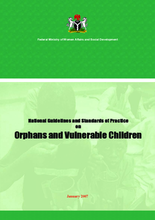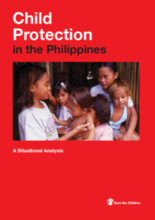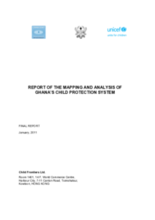Displaying 1391 - 1400 of 1759
This plan is expected to guide effective and coordinated national responses to prevent and/or alleviate vulnerabilities of children in Uganda over the next five years.
This study on violence against children in state-run residential institutions in Kazakhstan was conducted under the national Office of the Commissioner for Human Rights and UNICEF. Data was collected from six different types of state run- residential institutions for children in 3 regions using a multi-methods approach, including surveys with children ( 9-18 years old) and staffs, and interviews with young people (17-23 years old) who had left the care of these institutions.
The first comparative study of young people who have been in state care as children and their post-compulsory education, was undertaken by a team of cross-national researchers.
This mapping and assessment reviews the framework for the child protection system in Timor-Leste, to consider whether the blueprint is designed with a clear vision and if the system is implementable and sustainable.
Guidelines developed to assure and improve the quality of services for the well being, protection and development of orphans and vulnerable children in Nigeria
This article reviews the series of major changes undergone by the Romanian child welfare system from 1990 to 2010, including the laws and governmental reform measures enacted, the shift in child population among various Romanian institutions and foster care homes, types of institutions available to children, level of care, shift in reasons for child abandonment, changes in ways children are routed through the system, and how these changes have effect children’s development, health, and psychological well-being.
This fact sheet by Save the Children provides an overview of the current status of national child protection systems in Zambia.
This situational analysis was commissioned by the Child Protection Initiative as a preliminary exercise to develop evidence-based recommendations to guide Save the Children in the Philippines to develop interventions. Priority areas are children in residential care, children in armed conflict and disasters, children in situations of migration (including for trafficking purposes), and children in exploitative and hazardous work conditions.
The objective of this child protection systems mapping and analysis is to provide stakeholders with a descriptive profile of their existing system, and an initial assessment of its contextual appropriateness and relevance to the populations being served.

